How to Grow Basil from Seed Indoors: A Practical Guide
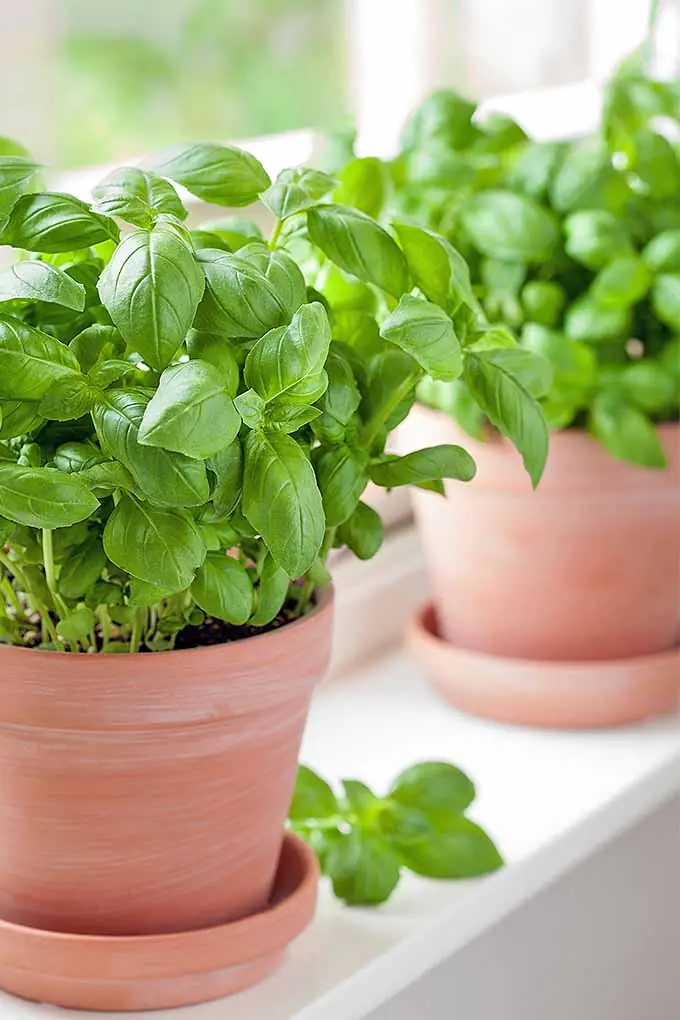
If you love to cook with fresh herbs but don’t have the luxury and space for a garden in your home, learning how to grow sweet basil from seed indoors will be a great way to have fresh herbs like basil at your fingertips all year around without spending a cent.
Basil is a popular herb because of this herb’s ability to perform wonders for various dishes. Not only does learning how to plant basil seeds in a pot indoors help you access fresh herbs anytime you want for your culinary creations, but it also beautifies your home by adding a touch of greenery to your home. Still, growing basil from seeds at home isn’t an easy task.
Whether you are an experienced gardener or a beginner, in this article, we will provide all the information you need to cultivate basil from seed indoors like a pro successfully!
When to Start Growing Basil from Seeds Indoors
You can grow basil seeds indoors at any time of year, but winter is the most common period people plant this herb. If you want to plant indoors during winter, make sure the last frost in your area was at least 6-8 weeks ago – technically, this timeframe depends on your location or region. This simple trick ensures your seed sprouts and matures to a fitting transplant size if you intend to transfer it to your outdoor garden.
So, when should I start basil seeds indoors? Here is what you need to take into consideration:
- Check your local frost dates to determine when to start your seeds.
- Can’t determine the best planting time even when you know the expected frost date? Plant indoors in late winter or early spring.
- Check the weather around your region and be prepared to move your plants outdoors once the weather warms up.
Step-by-Step-Guide on How to Grow Basil from Seeds at Home
If you’ve never planted these seedlings, don’t worry. In this section, we will show you how the process typically works, from what supplies you should get to how to plant the seeds, care for them, water them, and harvest them.
Step 1: Get Your Supplies
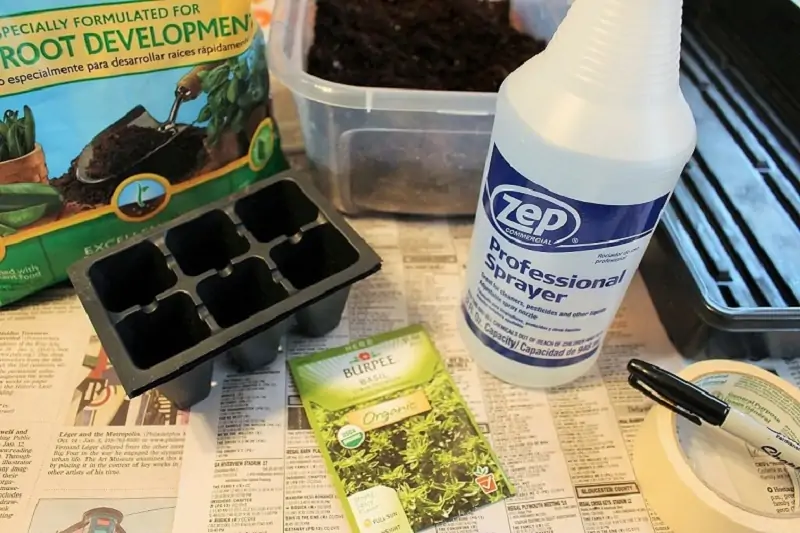
The first thing to keep in mind is that there are so many materials you can use for this process. However, some of the essential ones to consider are:
- Basil seeds (purchase them online or at your local nursery)
- Container (any container will work, but the best one onscreen have drainage holes to help you prevent water from pooling in the soil)
- Potting mix (they are easy to find at the local nursery or an online store)
- Watering can (get the ones you like, but those ones designed with a long spout will help you water your plants without disturbing the soil)
- Grow lights
- Fertilizer
- Scissors
Step 2: Get the Soil Ready for Planting
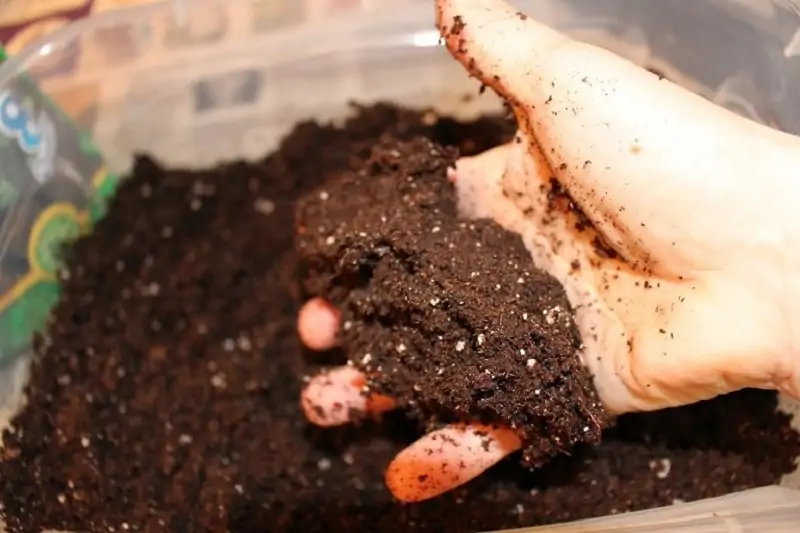
After getting the supplies, pour a small amount of potting soil into the container. Also, avoid using dry soil so the seedlings have enough nutrients to grow healthy.
Step 3: Sow the Seeds
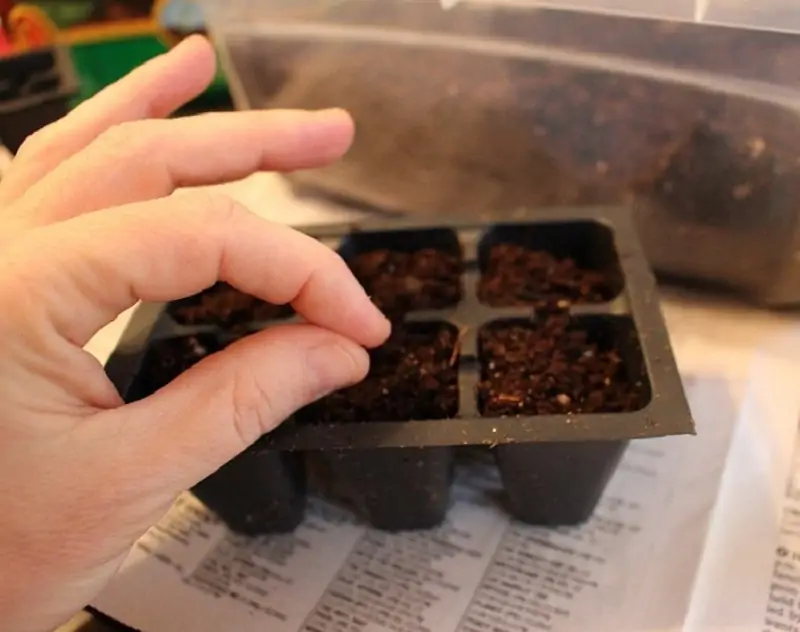
Once you have your container and soil ready, place some seeds in your palm and sprinkle only a small amount (at least 2-3 seeds per pot) on the soil so that the plants have enough space within the pot to mature. Then, cover the seed with more soil so that they are about ¼ inch deep in the soil and won’t fall off easily.
Step 4: Place a Protective Cover over the Pot
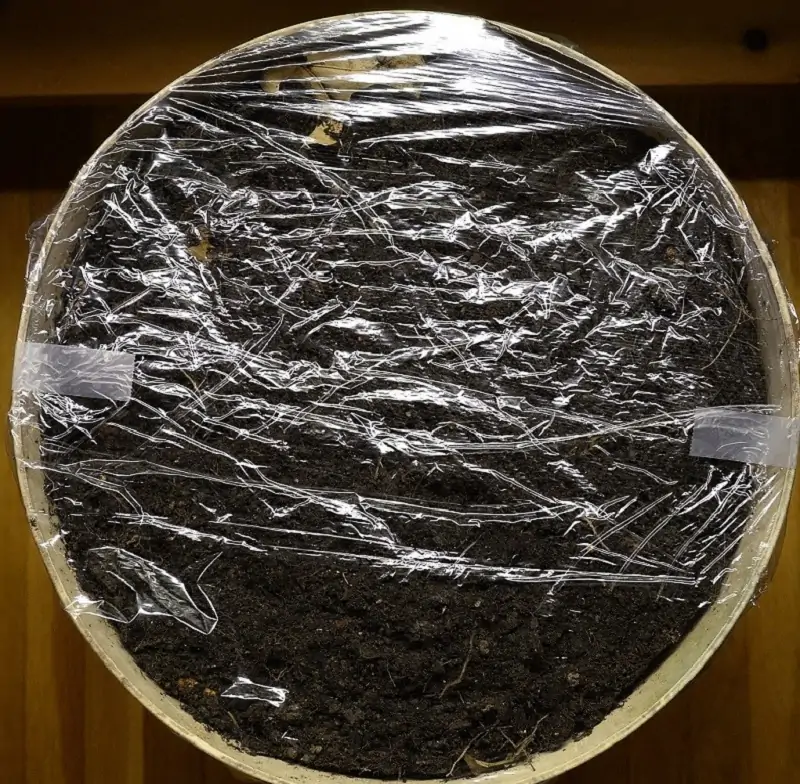
The next step is to cover the container with plastic wrap or use a clear lid to create a mini greenhouse. An addition like this will help the soil retain moisture so that you won’t bother about watering the soil until after the seeds sprout.
Step 5: Provide Proper Lighting
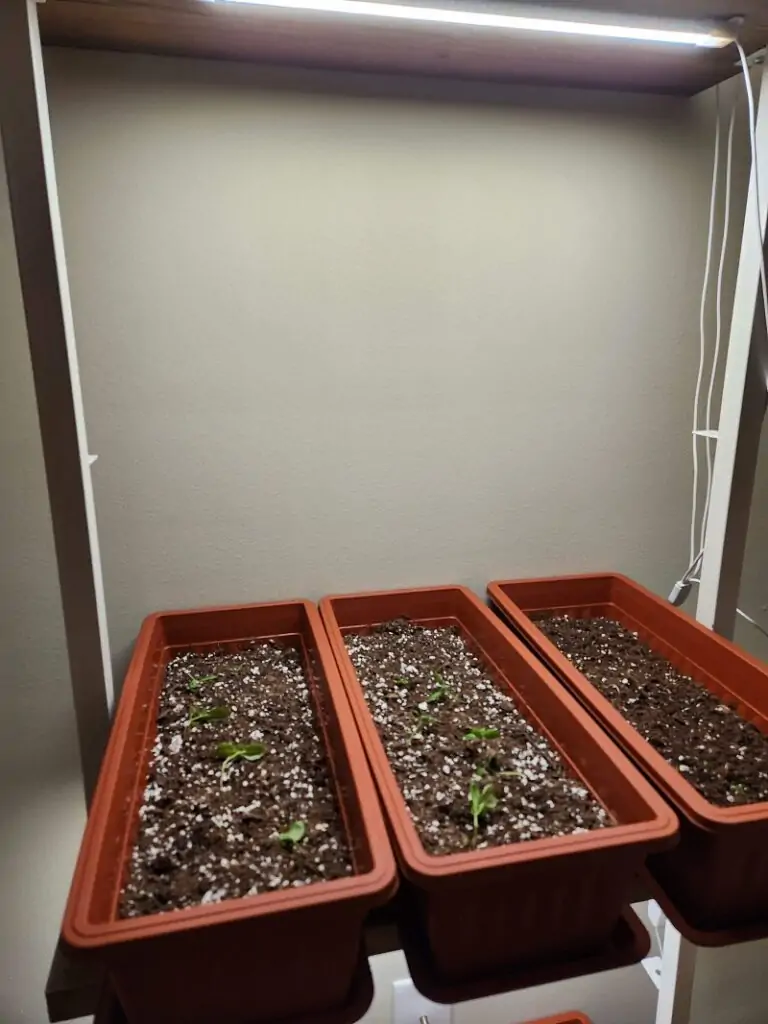
Lighting helps the seed germinate. Ideally, 6-8 hours of direct sunlight daily will do the job, but if your growing space does not favor natural light and often looks dark, place your container under a grow light for 14-16 hours a day to provide adequate lighting for your plants.
Step 6: Transplant Sprouted Seeds
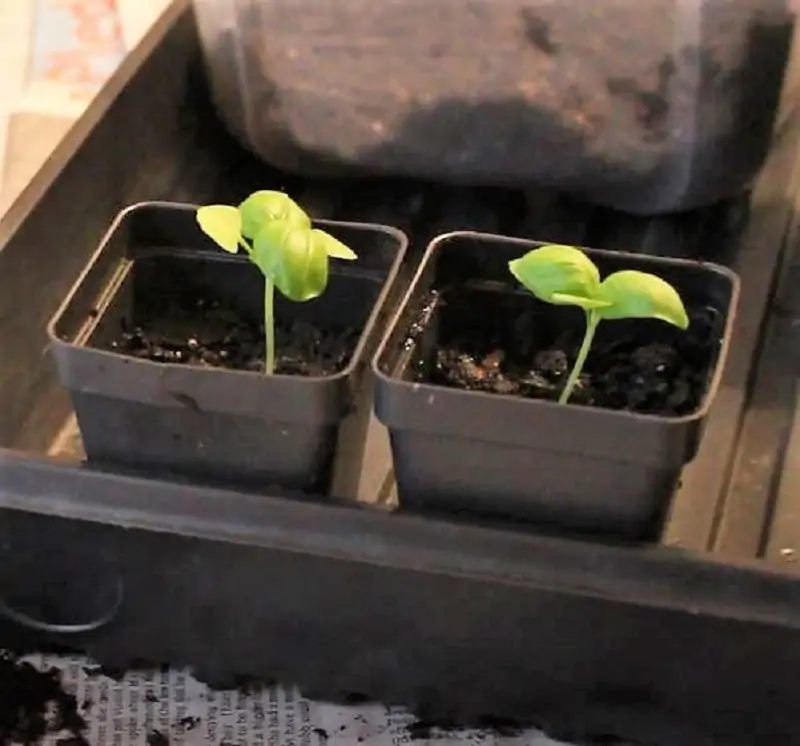
If you lack a proper garden in their home, once the seedlings have grown large enough to handle, transplant them into individual clay planting containers filled with potting soil and place them outdoors. When planting your seedlings, be patient, and don’t worry, you should see the results within a week or two.
How to Care for Your Basil Plants
It’s an exciting process, growing healthy herbs from a little seed. Unfortunately, the sprouting seeds can perish easily without the right care. Consider the following care tips to ensure your tiny seedlings stay fresh and grow properly.
- The soil you use determines how well the little seedlings you plant grow. To help these herbal plants grow, use well-draining soil.
- Also, consider fertilizing the soil at least twice weekly to keep your plants healthy, fresh, and growing continuously.
- Always prune the top leaves to about 6 inches (15 cm) tall to prevent the plant from getting too tall and leggy.
- Basil can quickly get infested by pests, like aphids, spider mites, and whiteflies, and they can damage your plant if you don’t attend to them. Once you notice these pests on the leaves, use insecticidal soap or neem oil to remove them and avoid damage to your plant.
Tips on Growing Basil from Seed Indoors in Winter
Growing herbal plants during winter requires a little extra care to keep them fresh and healthy. Here are some tips to consider when planting indoors during the colder months:
1. Choose the Right Container
You can grow your seedlings in any container; they are not selective. Still, you want to choose a container with good drainage to avoid overwatering. This means anything from seed trays to small pots will work great when considering how to grow basil from seeds in a pot, as long as they have drainage holes. Besides this, other factors you should consider when choosing a container to use at home include:
- Use a container that is at least 6 inches deep
- Add perlite or vermiculite to improve drainage and aeration.
2. Use the Right Soil
Make sure to use well-draining soil that is rich in nutrients. Local hardware and online stores have good quality soils that can help you grow veggies at home, but if you can’t find it in local stores around you or online, make your own by mixing equal parts of peat moss, vermiculite, and perlite. Also, keep in mind that you don’t want soil that seems drenched or too dry and has too much fertilizer. These factors may cause the plants to lose a good amount of their fresh flavor.
3. Keep the Temperature Consistent
Basil leaves do well in temperatures between 60-85 degrees Fahrenheit (16-30 degrees Celsius). So, make sure to keep the temperature in your growing area within this range to encourage healthy growth.
4. Thin the Seedlings
Once your plant is about 2 to 3 inches tall, it’s time to thin them out. Leave only the strongest seedling in each pot, and snip off the others at the soil line. This hack will prevent crowded growing areas and ensure the plant has a spacious room to grow so your plants won’t compete among themselves for space.
5. Harvest Regularly
Once your basil plants are 6 to 8 inches high, you need to harvest them. The simple reason is that harvesting the plant gives it a chance to regrow. To harvest your plants, use a sharp scissor to cut off the top leaves and leave only two sets of leaves on the plant. Regular harvest will encourage regrowth, but if you fail to do this step, your herbs may remain stagnant and die.
6. Water Carefully
You know that winter is the best time to grow basils. Unfortunately, the biggest drawback of planting during the winter months is that the air tends to be drier and may cause your herbs to dry out more quickly. Fortunately, you can avoid this mishap by watering your seedlings frequently and carefully. Still, make sure not to overwater or underwater them as either may cause the root to rot.
FAQ’s
If you are not well versed in planting basil seeds indoors, in this section, you will find the answers to some common questions.
It depends. Usually, you can expect the first seeds to germinate within 5 to 7 days, then grow large enough to place them in a larger pot in 4 to 6 weeks. After this, it will take another 3 to 4 weeks for them to start producing leaves. So, in total, you can expect your seedlings to fully bloom to become edible herbs within 2 to 3 months.
No, this step is not necessary, but it makes the germination process fast. Of course, putting the seedlings in warm water for a few hours or overnight will help you soften the seed coat and make it sprout faster. Still, you need to be careful not to soak them too long. Doing so can cause the seeds to rot. If you soak your seeds, don’t leave them in the water for days. Instead, plant them immediately in well-draining potting soil.
Conclusion
Growing basil is a fun, rewarding, and enjoyable experience. However, without the right supplies and planting techniques, growing healthy and flavorful basil plants all year round won’t be an easy task. The good news is that with this comprehensive step-by-step guide on how to grow holy basil from seed indoors, both a seasoned gardener and a beginner can harvest fresh herbs right from their windowsill.